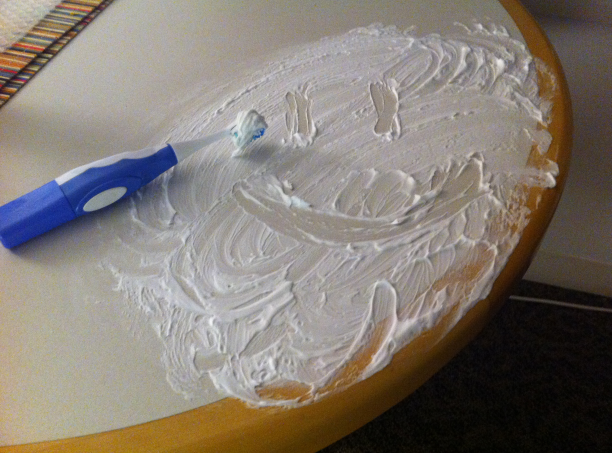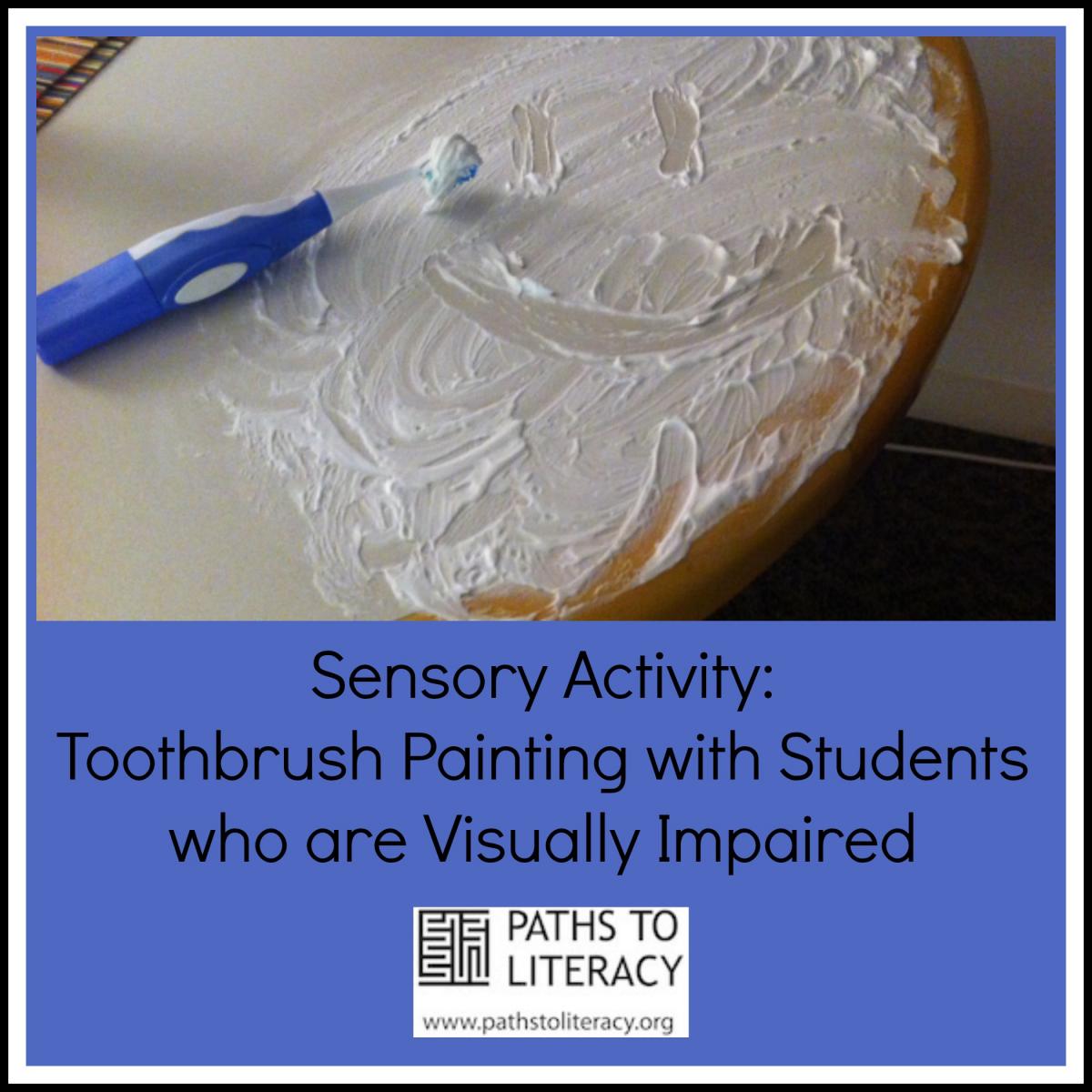Electric Toothbrush Painting

For some children with multiple disabilities, sensory input and direct stimulation of a specific muscle are essential to helping them perform a physical activity. For example, a child with Rett’s syndrome may need massaging of the core muscles, hamstrings and quadriceps before being able to perform a sit-to-stand transfer to successfully. This massaging and deep pressure may provide the muscle with the necessary proprioceptive input (that it is not otherwise receiving from the brain) to "wake up" and perform the task. Vibration is one way to provide sensory input to a muscle externally. For a child that may have difficulty recognizing where there hands are and how they can use them to reach for things, drawing or writing in a variety of different mediums while using a vibrating toothbrush may be an appropriate preparatory activity to provide sensory input before performing other fine motor or upper extremity tasks.
- Electric toothbrush
- Shaving cream, paint or toothpaste
- Place painting medium on table in front of child
- Have child turn on toothbrush or turn it on yourself and place it in child’s hand
- Let child get used to sensation; then allow them to draw freestyle or ask them to draw specific letters or shapes with the toothbrush
- Place painting medium on an easel to increase wrist extension
- Build up toothbrush with a foam noodle to make it easier to hold
- Using toothpaste would increase the sensory experience because as the child brushes the toothpaste, the minty smell gets stronger
- Use the toothbrush on various surfaces such as sandpaper, aluminum foil, bubble wrap and fabric
- Allow child to experiment with using the toothbrush functionally to clean something that is dirty such as an old penny or big rock

